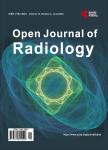Simulating Medical Imaging X-Ray Tubes with Various Parameters Using BEAMnrc Monte Carlo Software
Simulating Medical Imaging X-Ray Tubes with Various Parameters Using BEAMnrc Monte Carlo Software作者机构:Department of Industrial Design and Production Engineering University of West Attica Athens Greece Department of Medical Physics Medical School University of Patras Patra Greece Medical School University of Thessaly Larissa Greece Department of Biomedical Engineering University of West Attica Athens Greece
出 版 物:《Open Journal of Radiology》 (放射学期刊(英文))
年 卷 期:2022年第12卷第3期
页 面:125-141页
学科分类:07[理学] 070202[理学-粒子物理与原子核物理] 0702[理学-物理学]
主 题:Bremsstrahlung Filter Monte Carlo Spectral Distribution X-Ray Tube
摘 要:Context: Medical imaging has a wide range of applications in today’s society. Basic projectional radiography, CT scans, mammograms and a range of other advanced technologies all use x-rays to create a large number of examinations every day across the world. The most essential component of such medical equipment is the x-ray tube, which creates and produces x-rays. Objective: We describe and investigate an abstract model-geometry of a simple x-ray tube utilizing the open-source software package of BEAMnrc of the EGSnrcmp family, which is well validated by several studies over the years, for high and low energy photons generation. Methodology: Our research focuses on two different electron beam energies: 120 keV and 30 keV. The 120 keV is the typical energy for simple projectional radiographic exams and CT examinations, whereas the 30 keV is the typical energy of mammography. Results: Two different anode materials are used for each case, Gold (Au) and Tungsten (W) for 120 keV because these are the most common in projectional radiography and CT;Molybdenum (Mo) and Rhodium (Rh) for 30 keV because with these targets most mammography exams are carried out. The aim of this work is to show how the BEAMnrc software package can simulate effectively x-ray generation of low-energy photons which are utilized in modern medical imaging procedures. We describe useful information on anode-target characteristics, such as anode angle, anode material, and metal filter materials, based on previous quality studies even by using software other than BEAMnrc. Conclusion: We demonstrate that BEAMnrc can be efficiently used for Monte Carlo modeling of low-energy photons.



